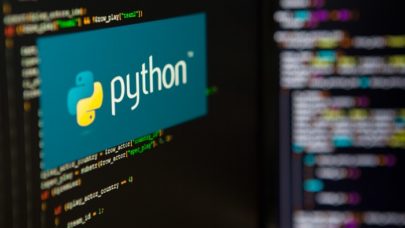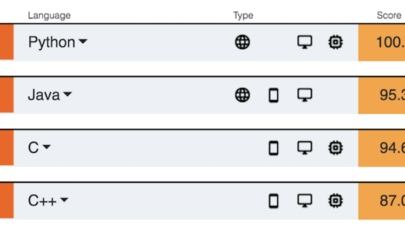
It Doesn’t Get Much SWEETER: The Winter HPC Computing Festival in Corpus Christi
February 14, 2024
(Main Photo by Visit Corpus Christi CrowdRiff) Texas A&M University's High-Performance Research Computing (HPRC) team hosted the "SWEETER Winter Comput Read more…

ChatGPT Friendly Programming Languages
(hello-world.llm)
December 4, 2023
Using OpenAI's ChatGPT to write code is an alluring goal. Describing "what to" solve, but not "how to solve" would be a huge breakthrough in computer programm Read more…

Solving Heterogeneous Programming Challenges with Python, Today
June 30, 2022
You may be surprised how ready Python is for heterogeneous programming, and how easy it is to use today. Our first three articles about heterogeneous programming focused primarily on C++ as we ponder “how to enable programming in the face of an explosion of hardware diversity that is coming?” For a refresher on what motivates this question... Read more…
Julia Update: Adoption Keeps Climbing; Is It a Python Challenger?
January 13, 2021
The rapid adoption of Julia, the open source, high level programing language with roots at MIT, shows no sign of slowing according to data from Julialang.org. I Read more…

Python Again Tops IEEE Spectrum’s Programming Language List
July 22, 2020
What’s your go-to programming language? As judged by IEEE Spectrum, it is (again) Python and comfortably so according to an article posted today. C++ finished Read more…

What’s New in HPC Research: Python, Brain Circuits, Wildfires & More
May 4, 2020
In this bimonthly feature, HPCwire highlights newly published research in the high-performance computing community and related domains. From parallel programm Read more…

CloudyCluster Helps Students Build Bright Futures in HPC
December 20, 2019
Looking for a future in HPC, some students literally taught themselves Python in a day while competing in the Cloud HPC Hackathon (also known as the Omnibond C Read more…

TIOBE Index: Python Reaches Another All-Time High
June 17, 2019
TIOBE has released its June 2019 Index, and Python has reached another all-time high. TIOBE, which stands for “the importance of being earnest,” was founded in 2000. Its Programming Community Index – which is updated on a monthly basis... Read more…

- Click Here for More Headlines

Whitepaper
Transforming Industrial and Automotive Manufacturing
In this era, expansion in digital infrastructure capacity is inevitable. Parallel to this, climate change consciousness is also rising, making sustainability a mandatory part of the organization’s functioning. As computing workloads such as AI and HPC continue to surge, so does the energy consumption, posing environmental woes. IT departments within organizations have a crucial role in combating this challenge. They can significantly drive sustainable practices by influencing newer technologies and process adoption that aid in mitigating the effects of climate change.
While buying more sustainable IT solutions is an option, partnering with IT solutions providers, such and Lenovo and Intel, who are committed to sustainability and aiding customers in executing sustainability strategies is likely to be more impactful.
Learn how Lenovo and Intel, through their partnership, are strongly positioned to address this need with their innovations driving energy efficiency and environmental stewardship.
Download Now
Sponsored by Lenovo
Whitepaper
How Direct Liquid Cooling Improves Data Center Energy Efficiency
Data centers are experiencing increasing power consumption, space constraints and cooling demands due to the unprecedented computing power required by today’s chips and servers. HVAC cooling systems consume approximately 40% of a data center’s electricity. These systems traditionally use air conditioning, air handling and fans to cool the data center facility and IT equipment, ultimately resulting in high energy consumption and high carbon emissions. Data centers are moving to direct liquid cooled (DLC) systems to improve cooling efficiency thus lowering their PUE, operating expenses (OPEX) and carbon footprint.
This paper describes how CoolIT Systems (CoolIT) meets the need for improved energy efficiency in data centers and includes case studies that show how CoolIT’s DLC solutions improve energy efficiency, increase rack density, lower OPEX, and enable sustainability programs. CoolIT is the global market and innovation leader in scalable DLC solutions for the world’s most demanding computing environments. CoolIT’s end-to-end solutions meet the rising demand in cooling and the rising demand for energy efficiency.
Download Now
Sponsored by CoolIT
Advanced Scale Career Development & Workforce Enhancement Center
Featured Advanced Scale Jobs:
HPCwire Resource Library
HPCwire Product Showcase
© 2024 HPCwire. All Rights Reserved. A Tabor Communications Publication
HPCwire is a registered trademark of Tabor Communications, Inc. Use of this site is governed by our Terms of Use and Privacy Policy.
Reproduction in whole or in part in any form or medium without express written permission of Tabor Communications, Inc. is prohibited.
























